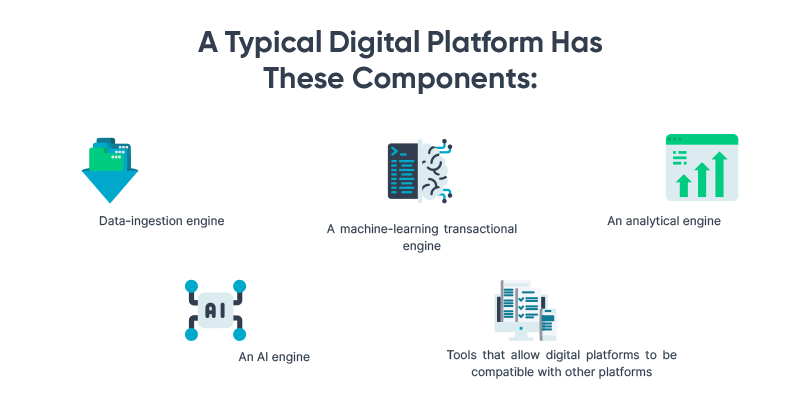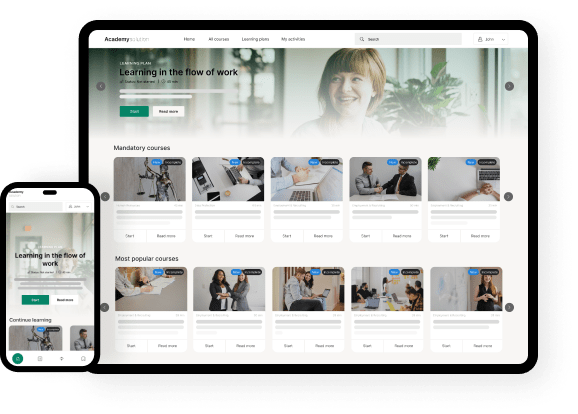There’s still much to be desired when it comes to improving value chains. In this ultra-competitive marketplace, this means moving away from traditional processes to digital transformation through platforms.
But let’s face it. Introducing modern technology goes beyond getting the latest gadgets or software. It’s a massive and complex cultural shift that requires continuance. Embracing innovation means being mindful and comfortable with the idea of changing and rethinking old business models.
It’s important to ask first, why do even companies need to catch up with modernization? To answer this question, let’s put things into perspective. The following discussion will highlight the important things you need to know about digital platforms and digital transformation.
Moving from Process to Platform: The Evolving Organizational Mindset
In a published article in Forbes.com, writer Peter Bendor-Samuel outlined how businesses are moving from “processes to platforms.”
He recalled how during the 80’s, companies worked around functions (e.g., IT HR, accounting). “They built functional expertise with a focus on skills, quality, and improvement,” said Bendo-Samuel. For a business that uses a functional orientation, goals and strategies come from the top and work their way down. Members of the company are grouped according to a hierarchy which has a clear management system.
Understanding that the functional orientation does have its limitations, a new philosophy emerged. By the mid to late 1990s, organizations saw a full bloom of what they called “process orientation.” Unlike functional orientation, this type of model prioritizes process rather than hierarchies. Process orientation focuses on outcomes and customer satisfaction.
The focus on the customer experience was crucial to the success of process orientation. However, it once again became clear that process thinking was not enough due to the growing demand for automation across industries. By the early 2000s, “platform thinking” emerged.
What is Platform Thinking?
In general, the global business landscape is shaped by the work of producers. In other words, markets revolve around a cycle of controlling and improving production. This process oftentimes includes a range of activities like design, manufacturing, and branding. Businesses that are able to compete are the ones that usually get the competitive advantage.
Platform thinking is a new perspective about the way companies, consumers, and competitors interact and create product or value. In this model, consumers are not just recipients but collaborators and active producers. Take for example Uber. The riders and drivers are the participants and partners. In order to create value, there must be an open architecture or platform that has a rule of governance. These rules help facilitate interaction within a community which most people describe as the digital ecosystem.
A digital ecosystem is composed of organizations that are digitally connected. They create value by sharing data generated on a specific platform. This platform delivers products and services in collaboration with the different organizations within the ecosystem.
Businesses in the digital ecosystem interact with consumers or partners in various ways. Nonetheless, when they decide to take this big step, they need to choose between two primary activities: building a digital platform or creating a new operating model. While both activities must occur simultaneously, companies should decide which task should come first. To understand further, you need to know what digital platform means.
What is a Digital Platform?
According to Martin Stoimenov, writer from solveo.com a digital platform is a “collection of software and hardware tools that companies use as a part of their digital strategy.” Digital platforms can also be defined as a collective term associated with technologies such as mobile devices and applications, cloud computing, in-memory technologies, and social media.

Source: The Enterprisers Project
There are many types of digital platforms available in the digital market. Some of the companies that you might probably know are Airbnb, Amazon, Facebook, Google, Uber, and Deliveroo. As mentioned earlier, these platforms have different business models, and the way they interact with end users and other businesses vary.
A digital platform has different types: advertising, social, e-commerce, and knowledge management.
When you talk about advertising platforms, think of search engines like Google, Yahoo, Bing, and Youtube. While we consider Instagram, Facebook, and LinkedIn as social platforms, they also have advertising business models.
Businesses who wish to sell physical products online can make use of e-commerce platforms like eBay, Amazon, or Shopify. On the other hand, a knowledge management platform organizes information so that users can quickly access and distribute it. Some of the notable knowledge management platforms out there are BoostsHQ, Edcast, GSuite, Evernote, and Zoho.
Digital Transformation as a Business Strategy
The above discussion shows that modern technology is an obvious imperative for all businesses, whether it be a small or large enterprise. With the global market starting to become increasingly digital, companies should be competitive and relevant.
What’s not clear to many companies is the process they need to undertake. Some of them even don’t know what needs to be changed in their existing business strategies. Companies also feel lost in embracing technology and a lot of them struggle to find answers in the haystack of technological jargons.
Even though the message of digital transformation rings loud and clear in every keynote or symposium, many business leaders don’t know what it truly means. To help you explore this concept, let us provide you with its simplest definition.
What is Digital Transformation?
According to The Enterprises Project, digital transformation “is the integration of digital technology into all areas of a business, fundamentally changing how you operate and deliver value to customers.”
It’s worth noting though that digital transformation is not physical change; it’s mostly internal. This kind of transformation demands cultural change.
Approaches to Digital Transformation
It’s essential to understand primarily what digital transformation means to your company. To adopt this kind of strategy, you need to start with a problem statement—a question “why” you need a digital transformation. Is it because you want to improve customer experience? Optimize productivity, or increase profitability? If you’re able to provide concrete answers to these questions, you’ll now be able to take the first step towards digital transformation.
Setting your goals is just the start of the process. That being said, here some approaches to embracing digital transformation in your company:
Put people first before technology
This is the paradox of adopting digital transformation. In order to be successful, you need to put people first before technology. Remember that it it’s easier to buy technology, but it will be harder to find and develop people with the right skills and potential. The basic idea here is that the creative aspect of innovation relies on people. Leveraging human skills should augment technology. This means that leaders should invest more in people who can make technology useful.
Concentrate on soft skills
The key to maximizing the success of your digital transformation is to focus your attention to soft skills rather than hard skills. Soft skills like time management, networking, and creative thinking constitute curiosity. In an article in Harvard Business Review, authors Becky Frankiewicz and Tomas Chamorro-Premuzic explained that technical competence may be short-lived, thus, intellectual curiosity must remain intact.
Our own talent development philosophy is to combine this dual focus on potential for soft skills, and knowledge for hard skills: we select people with high learnability (people with a hungry mind) and match their interests to in-demand skills, while understanding that those hard skills may soon become outdated — so the key is that their curiosity remains intact. Technical competence is temporary, but intellectual curiosity must be permanent.
Becky Frankiewicz and Tomas Chamorro-Premuzic in Havard Business Review, 2020
Start from top to bottom
Digital transformation will be successful if your campaign starts from top to bottom. Change is a matter of leadership. As far as digital transformation is concerned, the single most important factor in determining its success is good leadership. Jim Swanson, CIO of Johnson & Johnson, said that leadership and culture should be the center of any digital transformation.
You could have all those things – the customer view, the products and services, data, and really cool technologies – but if leadership and culture aren’t at the heart, it fails
Jim Swanson, CIO Johnson & Johnson
Start Your Digital Transformation with Cursum
Let us at Cursum help you in your digital platform needs and assist you in your digital transformation journey. We’ve been empowering different companies and providing them solutions tailored to their specific goals and objectives. Whether it be a solution for onboarding, compliance training, employee development, or anything that will give you a jumpstart for your new business strategy, we can guide you from start to finish.


